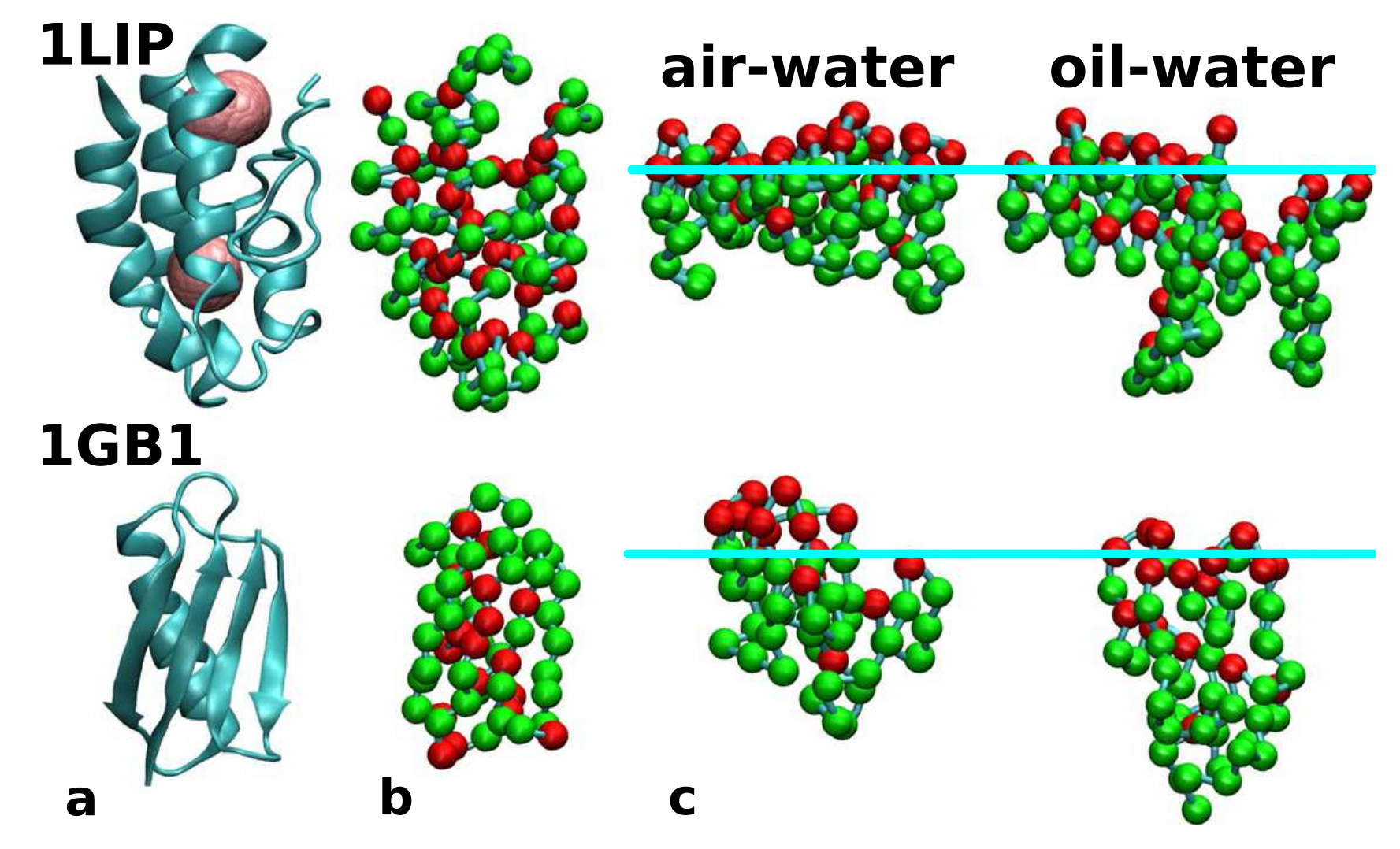We employ an empirical coarse-grained model to describe proteins at curved fluid-fluid interfaces such as occurring in bubbles and droplets. We consider the air-water and oil-water interfaces. We study the mass distributions and the geometry of the aqueous proteins as a function of the radius of curvature for protein G and two lipid transfer proteins. At curved interfaces the distortion of the proteins is different than at flat interfaces. We find that the proteins come closer to the surface of a bubble than to the surface of similarly curved droplet. In addition, the bubbles adsorb more proteins. We identify the pinning residues. We demonstrate the existence of the second layer in the density profile for sufficiently dense solutions.
Download a copy of the manuscript (preprint version)

